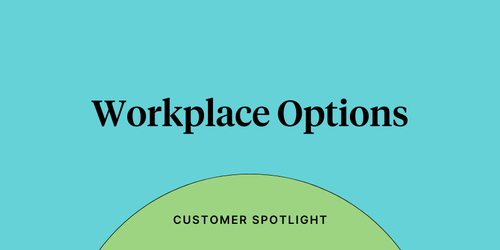
Article
Culture Amp research continuously shows that learning and development (L&D) is a core driver of the employee experience. In fact, companies that prioritize development see 24% more company growth. To keep your employees engaged and motivated, your organization must make opportunities for employee development available and accessible – or risk losing top talent. Once you have a development plan in place, you’ll want to confirm that it’s working, but how can you measure progress?
Simple goal setting and casual 1-on-1 conversations are a good starting point, but they aren’t enough on their own. Many companies still take a hands-off approach that doesn’t offer insight into important L&D data, making it impossible to understand and demonstrate impact. This data is essential for leadership buy-in when it comes to implementing company-wide development initiatives and keeping your organization responsive in an ever-changing world of work.
Just as sending regular engagement surveys helps you understand employee sentiment, drilling into employee development data can help you build an approach to development that truly works. When your development plans are informed by data and driven by employee feedback, your workforce will feel more motivated to grow with your company.
In this article, we’ll share how your organization can use data to measure, scale, and optimize employee development.
To help you get started, our people science team has identified three key benefits of using employee development data along with simple steps for getting started.
Collecting development data makes it possible to identify the high-impact areas worthy of investment. It’s not always possible to allocate dedicated L&D resources for every employee’s wants and needs, but it is feasible to fulfill high-level departmental or organizational needs.
A good place to start, as always, is to ask employees what they want to learn and what they need to feel successful in their role. Ask about top growth areas and where they may feel less motivated. From here, you can aggregate the data to pinpoint exactly what initiatives are most desired and worth prioritizing. This makes it possible to maximize any investment you make by providing the tools and resources that will make the biggest difference to your organization.
Now that you’ve identified key focus areas for L&D, keep tapping into employee sentiment data to understand how any new or existing resources are being used. Leverage participation data to understand what’s working, what’s not, or where changes can be made to keep employees motivated.
Remember, it’s common for employees to show resistance when new tools or systems are introduced. If you’re seeing less than ideal adoption rates for L&D initiatives, consult your employees – and the data – to understand what needs to change. If initial data shows that 80% of employees wanted access to tools for professional coaching, yet only 20% are using the new tool, you’re most likely facing adoption issues. Continue collecting data to understand where employees may be facing friction, and use these insights to better communicate the value behind making time for growth and development.
More employees leave for new opportunities when they lack access to L&D resources. To reduce the rate of turnover at your organization, ensure development is not just available, but ongoing and personalized to each employee. Supporting them along the way shows your organization’s commitment to their growth – allowing them to see a path forward with you – and helps to surface any gaps or ongoing roadblocks.
In addition to regular engagement survey questions, consider surveying employees about how strongly they agree with the following development statements:
When you show continued interest in an employee’s progress, they’ll feel more confident in their future with your company. Beyond that, you will be able to measure the evolution of employee sentiment around any L&D initiatives, allowing you to fine-tune your approach for ultimate employee satisfaction.
Put your organization at the forefront of L&D by taking a data-led approach to employee development. The right foundation will keep your organization and its employees aligned when it comes to development, so HR teams and managers can easily reprioritize and make decisions based on employee feedback and progress.
Develop by Culture Amp is a scalable, measurable, and easy-to-use employee development tool that puts development right at the center of your employee’s daily workflow. This helps your business understand what motivates your employees so you can implement tools and resources that offer true value. Develop also helps managers facilitate transparent and personalized conversations around development and create tangible goals – rather than relying on roundabout, infrequent catch-ups.
Develop also offers straightforward access to aggregate employee data, collected across various development touchpoints, within a simple dashboard. Leveraging this workflow means your organization can spend more time where it matters, building a robust approach to L&D that can help improve both engagement and performance.
